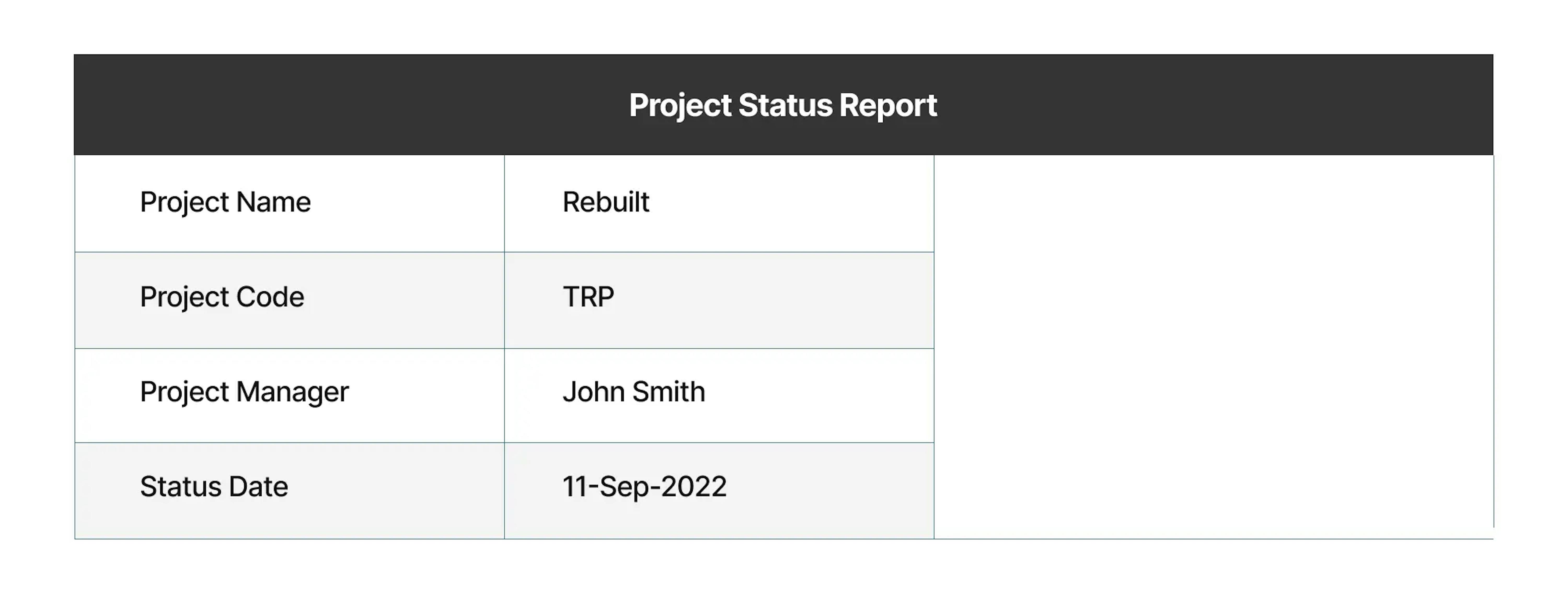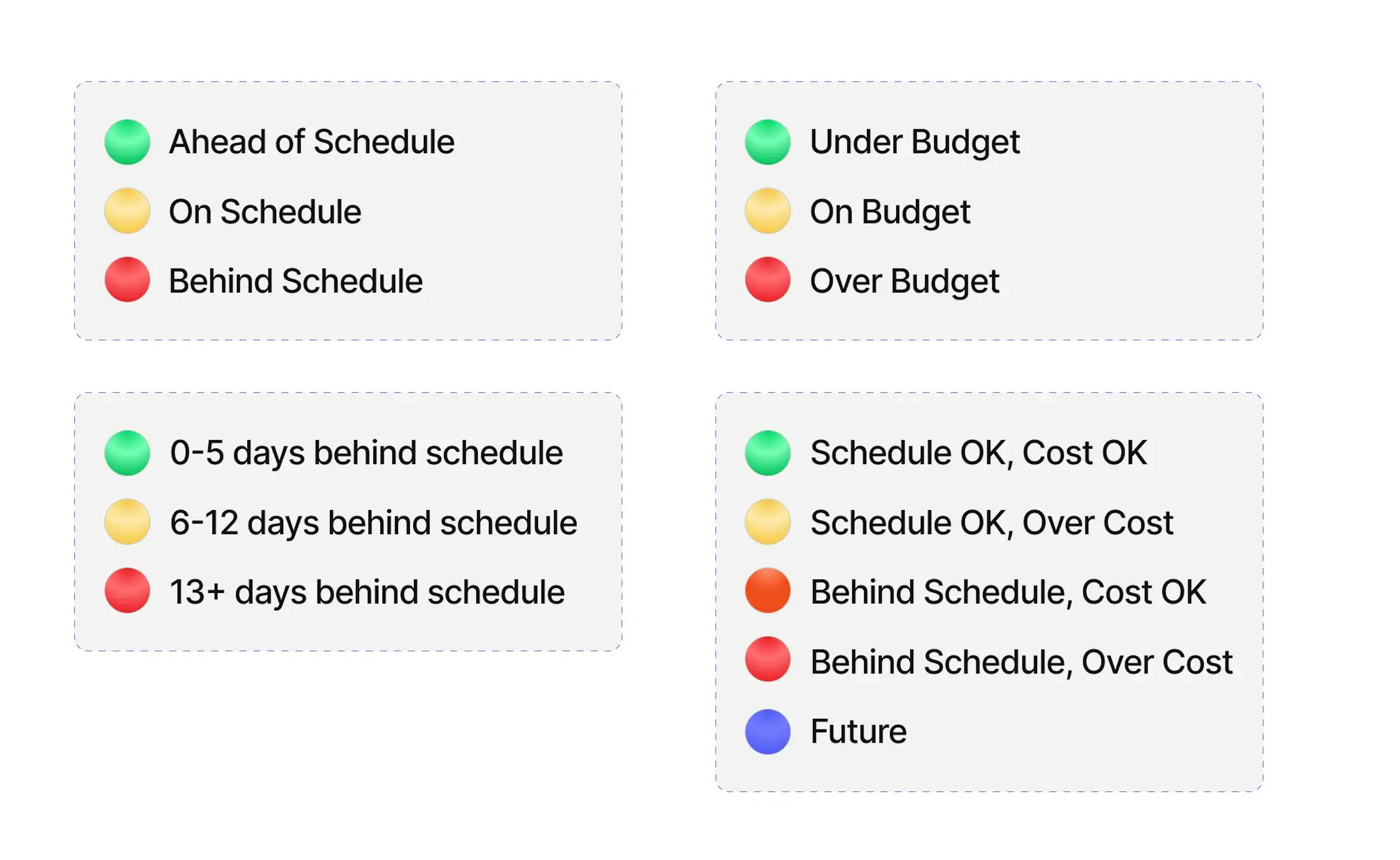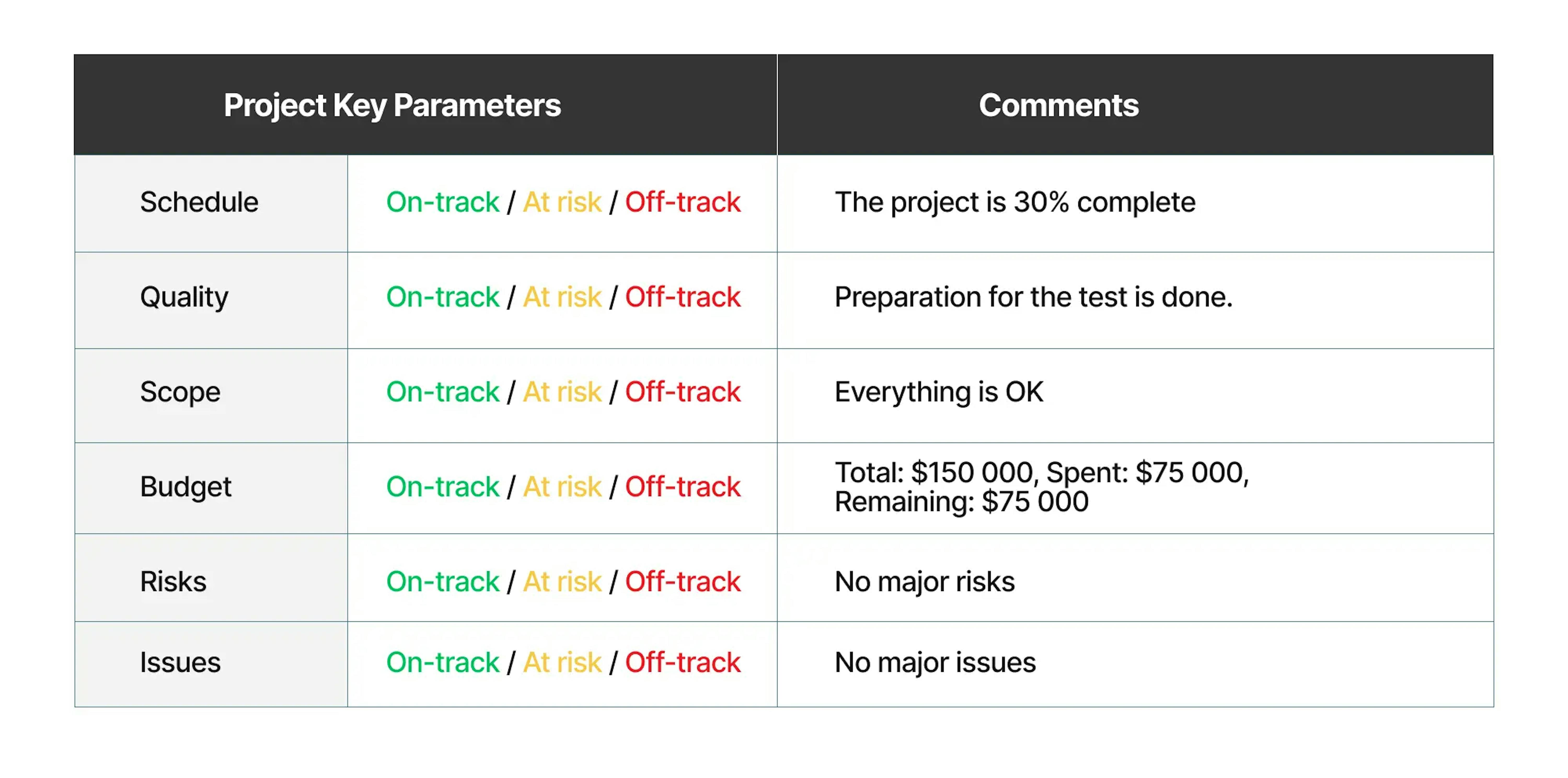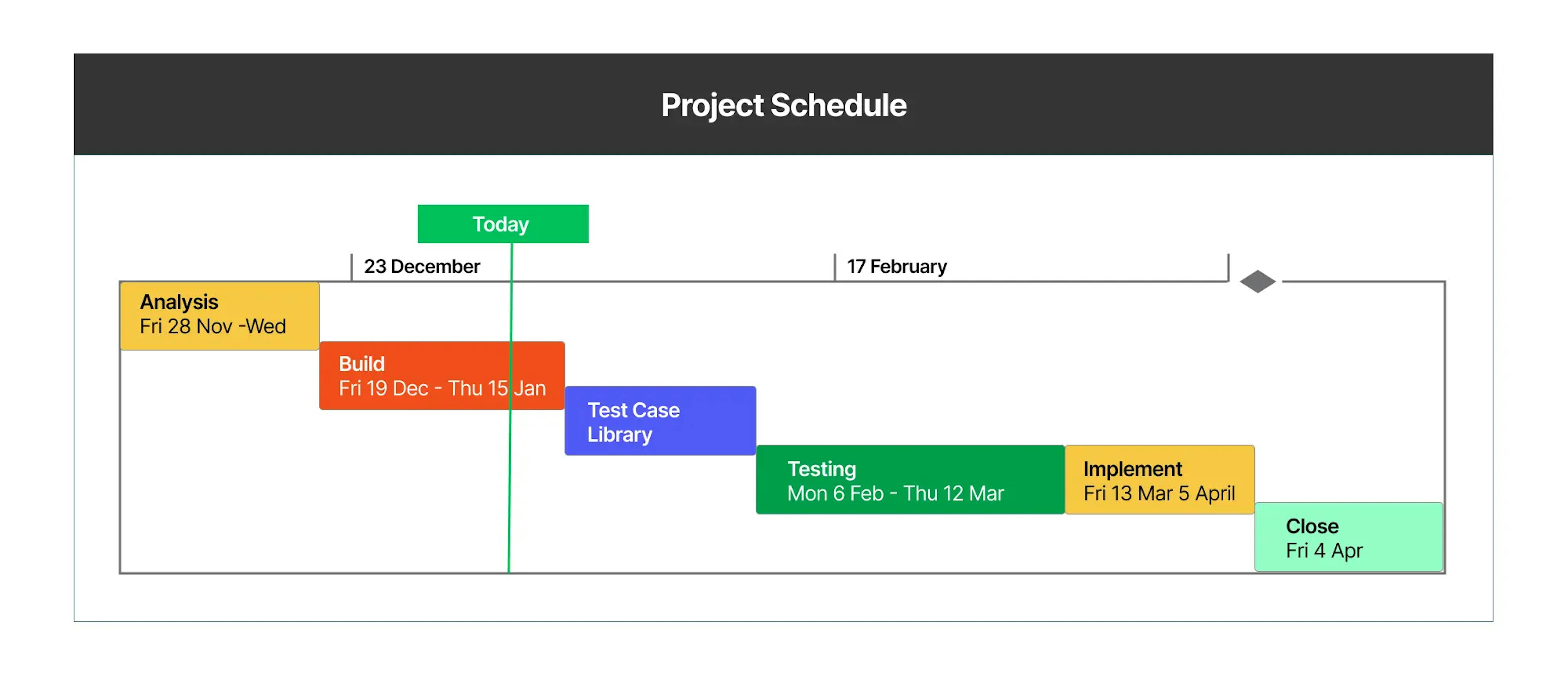Project reporting is important in software development. Among all the reports that we write, a software engineering report takes a special place. Here, you can read about the importance of software reporting, what a software project status report is, the benefits of reporting and risks that arise if reports are not written, and how to write a report correctly.
What is software engineering report and why does it take a special place among other reporting documents?
A software engineering report is a document that communicates the implementation of design ideas to stakeholders. It is made to communicate the results of work and to outline the plan for future tasks.
At Mad Devs, we write a software engineering project report every month to:
- Explain the business value delivered by us during a one-month period;
- Show why the implementation of a specific feature or fixing of a specific bug was needed for the business, what value it brings, and what issues it solves;
- Finally, a software engineering project report is an artifact that can be shown to investors to prove that a specific amount of work was performed.
In this software project report sample, we can clearly see that our software engineering project reports include:
- A short summary of all works completed during a given month;
- A detailed description of tasks completed and the value that they bring to the business;
- A short overview of less important tasks performed:
- Plans for the next month.
If there are changes in the team, we mention them in the section "Team's updates & changes."
You can also get our free consultation if you need more expertise in improving productivity and collaboration within your software development team. We are always ready to provide our best project management practices.
What is a project status report?
A software project status report is a regularly updated document that summarizes the progress of a project against your formal plan. The status reports are typically taken regularly throughout the entire project's execution to maintain the schedule and keep everyone on track.
According to a Project.co survey, over 70% of people have stopped dealing with a company due to a feeling that they were not organized.
A status report is a type of communication that project managers use to communicate the project's status to the management team and key stakeholders. It's typically reviewed in weekly or bi-weekly meetings with team members and clients to keep track of the progress of a project and inform them about the project's risks and costs.
They can also visualize the project's data in charts and graphs. It is also included in project performance reports, designed to provide an overview of the project's status.
What should a status report include?
- Work summary
- Task planning
- Budget and timeline
- Report on risks, problem issues, and mitigation.
📖 How to build transparent work processes, so stakeholders have no questions about where the money was spent? Read Oleg Puzanov's new article, where he reasoned about the future of outstaffing and outsourcing and described the new approach to cooperation models – Transparent Remote Staffing.
The purposes of project status reports
A good project status report can also create ownership and accountability within your team. It can reveal issues and risks and, most of all, ensure that you're on track to finish the project.
Project status reports providing clients with valuable insight into the project's progress. They can also make them feel good about their costs and ensure that the project will continue to receive funding. Having a paper trail can also help keep track of the project's progress and ensure that it's on track.
The historical data contained in a project status report is very important, as the next time you plan on implementing a similar project, you might have to make changes. Having this information allows you to keep track of the project's progress and avoid any potential issues, bottlenecks, and mistakes.
Types of project reports
The different types of data that are collected in a status report are typically reported at different times. This is why we have a variety of reports that are weekly and monthly.
A weekly status report allows for keeping track of the various activities that are happening on the project. Project managers should regularly update the report with the latest statistics and keep it ready whenever a client requests it.
A quarterly status report is typically required for projects, and it should be around three to four months long. However, if they are required, ensure that you are mindful of the length of these reports. Instead of having a big list of goals, focus on the quantitative progress of the project.
Like any written document, a status report should also be customized to meet the needs of its audience. For instance, if a client prefers to receive content that differs from what's in the internal team, then adjust the report's content to accommodate this.
A monthly or bi-monthly status report is ideal as it allows upper management to keep up with the project's developments and progress. It should also provide a bigger picture of the project's budget and costs.
What happens if no reports are provided?
You can imagine a client asking about an update constantly because he or she doesn't know how the project is moving on? It sounds weird, doesn't it?
Well, this is exactly what happens if reports are not made. Ok, there is no need to report on every step. A report shall clearly show:
- What was planned to do within a specific period;
- What was done and what was not done;
- What is the action plan to handle the things that were skipped;
- What is planned to do during the next period?
For a project manager, it is a way to systemize the job completion, assess it, and see:
- Schedule progress against the plan: how much was done? Is the team managing to complete the tasks as planned?
- Current scope versus plan: has the project scope changed since the project began? If yes, how shall the tasks and roles be changed?
- A risk overview: are there any specific risks to be managed (inaccurate estimations, not meeting stakeholders’ expectations, poor productivity, etc.)?
Without a report, it is impossible to reply to these questions. If a project manager cannot reply to these questions, it means that the entire process is out of control. A report is also an opportunity to assess the job done and to share it with a client.
Elements of project status reports
A project status report is composed of various elements that summarize the various parts of a project. It serves as a way to keep stakeholders informed about the project's progress and identify areas where additional support is needed. To better communicate these details, be sure to include all of the following in your status report.
General info
Before you start creating a project status report, make sure that you have all the necessary details covered. These include the project's name, the number of resources, and the identity of the project manager. Having all of these details will allow you to keep track of the project's progress and ensure that you're communicating effectively with your stakeholders. You can also roll them into a template for your status report.

Project summary
The purpose of a project status report is to compare the progress of the project with the estimates and the forecasted completion date. This allows project managers to measure the project's success and control its execution. Another important aspect of the report is to include a summary of the activities that are causing issues. These include the factors that are affecting the project's quality, resources, and timeline.

A quick overview of the project's overall health can be included in a report, either in writing or visually. This can be done using the stoplight method.
The stoplight method uses green, yellow, and red color coding to indicate the overall health of the project:

Milestones
One of the most important phases of a project is the milestone review, which is a way to keep track of the project’s progress and identify areas where additional support is needed. This will allow you to keep track of the various milestones that you're currently on track to meet.
Break down the various milestones into completed and in-progress tasks to show the progress that has been made on each of them. The planned and actual start and finish dates of each step can help stakeholders track the project's progress.
Explain the reasons for the issue and how you're planning on addressing it. This will allow you to estimate the results that will be achieved once the problem is resolved.

Risks
External and internal factors can affect your project, which becomes issues once they affect its scope, budget, or timeline.
In your report, list all of the previously mentioned issues and new ones. You should also include a note about the steps that have been taken to address them. Also, make sure to note the status of the strategies that have been implemented to address these issues.
We recommend dividing risks into 3 sections:
- New project issues that have emerged since the last report. Also, provide a status update on the previously identified projects.
- The existing ones to develop a strategy to deal with them. This will help minimize the impact of these risks on the business.
- An open change request is a request that should be highlighted to inform stakeholders about the next steps in the project's development. For instance, if the project's budget or schedule gets stretched due to increased requirements, then the request should be prioritized.
Even if you don't always keep track of the risks associated with your projects, this section should be included in your weekly report. It's important that your team and stakeholders know that you're constantly looking for issues that could affect the project.

Metrics
You should also make sure that the report has the necessary numbers to back up the statements that you're making. Having the necessary metrics for the project during the planning phase will allow you to measure the effectiveness of the project.
How do you write a project status report?
After creating an organized list of all the necessary details, it's time to start reporting on the project. This guide will help you create a status report that will be useful for your company.
1. Gather information
Before you start writing a report, it's important that you gather the necessary information. This can be done at the divisional or departmental levels depending on the project's structure.
If you're using project management software, you'll also have a lot of data that will be used in your report. Some of these include the amount of time and money that you've spent on the project.
2. Know your target audience
One of the most important factors that you should consider is your target audience. It can be a status report for the project manager, a software project status report for programmers, a software project status report for programmers for clients, or even for the CEO. This will allow you to communicate the most important information to them.
The CEO-level project status report
Although not every company will require a project status report, and many experts believe that a CEO-level report is very important for a company's management. It can give them valuable insight into the project's progress and improve their visibility. The CEO usually looks for project recommendations and guidance from the project manager. In addition to having a maximum of seven or six slides, it's also important that the report includes a Frequently-Asked Questions section. This will allow the project manager to demonstrate that he or she has already prepared answers to the questions.
3. Use the project status report template
Creating a project status report is a daunting task, especially if you don't have the necessary templates. Having the necessary templates can help you avoid making mistakes and ensure that the information is accurate.
You also set expectations when it comes to providing updates in the same format over time. This allows your clients and executives to easily get the information they need.
4. Add visual content
One of the most important factors you should consider when creating a project status report is the use of visual aids. These allow project managers to easily explain complex information.
Rather than writing lengthy paragraphs, try to provide factual information in a visual manner.
For example:
- Pie charts
- Mapping
- Relevant graph
- Images and links

If you're planning on adding other types of data visualizations into the report, make sure that they are clearly designed and used for the information that you're planning on presenting. The elements of a project status report should be well-designed to make it easy to read and visually appealing. Have a consistent style and color palette.
5. Review and edit
Be careful and avoid spelling and grammatical errors. Also, make sure that the report includes all the necessary components. In addition, make sure that the information that doesn't add value is removed.
Do's and don'ts when you write a software engineering project report
The content and the structure of a software engineering project report might differ depending on the project. That's why it is impossible to provide some universal tips on the report's structure and content. However, there are common rules of what one shall do and what is better to avoid when writing a report.
Best practices for project status report
- According to different studies, people tend to focus on the top of a status report and skim the rest. To avoid getting caught off-guard, put the most important information in the executive summary.
- Be sure that everyone has access to the project status report.
- To measure progress and define the failure or success of an initiative, establish a set of metrics that are consistent with the goals and procedures of the organization. This will help improve the accuracy of the reports.
- Keep in mind the K.I.S.S. principle (Keep It Short and Simple) – Reports are a snapshot, so they should only contain brief updates. Also, remember that your stakeholders might want to expand on something, so ensure that you provide them with enough information.
At Mad Devs, we follow the mentioned rules strictly to make sure that our customers understand the reports we provide and that our reports comply with the widely accepted norms.
When we are preparing a report, we make sure it complies with the following requirements:
Consistency, clarity, and correctness are vital to the report. No ambiguity or inconsistencies are permitted. The report is prepared not only for internal use by the company employees but is also aimed at the customer. Every person who reads it shall understand clearly what is reported on, what was done before, and what is planned to do further.
The report shall be self-contained. It means that the client doesn't need other materials to understand it. So, make sure your report provides all the information and has all the data to be understood completely.
The report is created with the participation of all team members. All the report aspects shall be clear to all team members and elaborated by them. Then, your report will include all the aspects of the work done.
The report shall look as if it were written by one person even if all team members contribute to it (the same style, language, consistent terminology, etc.) A report that looks like it was made from different documents doesn't make a positive impression even if it contains all the required information.
The professional appearance of the report is important. It shall be neat and easy to read. Therefore, it is always better to follow a standard format of report writing. Do not forget to include the title page, table of contents, and the main parts of the document.
The choice of language is important. If the report is intended for a business audience, the language should not be technical. Instead, simplicity is the key here. The reason is that reports might be read by people who are far from being tech-savvy. They shall understand everything in the report. Only if they do so can your report be considered well-written.
In our software engineering project reports, we make sure to avoid the following mistakes:
We don't add too technical details such as code or other details that might not be clear to a business. We know that for a business, these details aren't important. Our clients are interested in what the product or feature brings, not how it was built.
We understand that a long document without any visuals is perceived as depressing. That's why we don't write just text without any images, graphs, screenshots, and other illustrative content.
Slang is not for official documents. Firstly, a report containing slang doesn't look professional. Secondly, words used internally aren't necessarily familiar to anybody. The main aim of a report is to provide information, not to confuse the reader. That's why we never use slang or jargon in official documentation.
We never use specific expressions or terms used inside of the team only. Such details are familiar to a limited circle of people, and we want to make a report clear to a business.
Jokes are not accepted in a report. Everything is good in its place. While we like jokes and often use them in communication within the team, we distinguish between business communication and communication with colleagues.
Building trust is not only about talking about positive things but also about not hiding the issues that arise during every project. That's why we don't avoid mentioning issues and failures. If there are problems, it is ok to include a postmortem to analyze the failure reasons and solutions.
We write reports not only for the sake of submitting them. For us, it is important not to just get rid of the task but to make sure the customer knows about the progress and understands exactly what work was performed. That's why, once the report is written and delivered, we follow it up by presenting it during a call with a customer. This procedure also ensures that the customer understands everything that we are doing.
We don't delay reporting. We set specific deadlines to provide a report and follow them strictly. Reporting is one of our priorities when creating project documentation.
We submit a report before sending an invoice for the job. A report explains what the customer has to pay for: what job was done, how much time was spent on it, what aims were achieved, and how they align with the plan. Therefore, the report shall be sent first. Only then, an invoice shall follow.
We never accuse people and never mention their failures. In a report, we talk about problems, not people. We believe that one person's failure is the failure of the team, and the problem shall be solved jointly.
Do not skip the table of contents or introduction. Before people move to the report body, they shall get an idea of what the report is about. Finally, these components ensure faster and easier navigation through the document.
We do not add links to resources that might be unavailable to somebody from the report recipients. Moreover, we do not refer to such resources if they contain information needed to understand the report. Yeah, imagine yourself trying to open a resource with limited access. It would be at least frustrating.
We've compiled all these important rules into a single checklist that can help you write your report:
Bottom line
So, writing reports is crucial for all the involved participants: customers, team members, and managers. Reports help to provide an overview of things done, compare them against the original plan, and keep the process under control. Reporting increases the project's visibility in all aspects and enables a manager to control the team performance and the quality of their work. And for customers to stay in a closed loop of tracking projects' progress and state.
We've provided you with the necessary resources to create reports that are both informative and organized. Doing so will allow you to keep track of all of your project's details. We can help you learn more about the various features and functions of project management technics. Contact our experts for a meeting and consultations.























